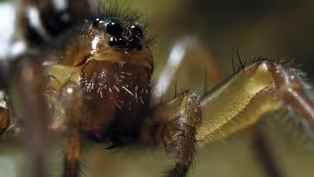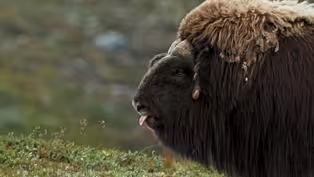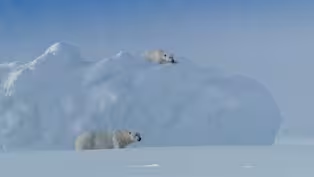
Surging Glacier in Svalbard
Clip: Episode 3 | 3m 36sVideo has Closed Captions
Glaciologist Heidi Sevestre studies timelapse footage of a surging glacier.
Dr. Heidi Sevestre studies the surging Wahlenbergbreen glacier in Svalbard, which has accelerated in recent years. Using time lapse footage, she and her team monitor the glacier's movements and find it's moving at an incredibly fast pace of four to five meters per day.
Problems playing video? | Closed Captioning Feedback
Problems playing video? | Closed Captioning Feedback

Surging Glacier in Svalbard
Clip: Episode 3 | 3m 36sVideo has Closed Captions
Dr. Heidi Sevestre studies the surging Wahlenbergbreen glacier in Svalbard, which has accelerated in recent years. Using time lapse footage, she and her team monitor the glacier's movements and find it's moving at an incredibly fast pace of four to five meters per day.
Problems playing video? | Closed Captioning Feedback
How to Watch Wild Scandinavia
Wild Scandinavia is available to stream on pbs.org and the free PBS App, available on iPhone, Apple TV, Android TV, Android smartphones, Amazon Fire TV, Amazon Fire Tablet, Roku, Samsung Smart TV, and Vizio.
Buy Now
Providing Support for PBS.org
Learn Moreabout PBS online sponsorshipIn recent years glaciers across Svalbard, have been behaving strangely.
Scientists know that the Scandanavian Arctic, like most of the North, is undergoing a dramatic change.
None more so than glaciologists, like Dr. Heidi Sevestre.
"My job is to study big monsters of ice," "like this guy behind me..." "I find glaciers endlessly fascinating."
"They are absolutely beautiful," "they are just mesmerising."
Heidi has been studying glaciers for over 10 years.
"Just another day in the office."
Wahlenbergbreen is one of over 2,000 glaciers on Svalbard.
This is a river of ice, 16 miles long, emptying into the sea.
"Glaciers in the Arctic" "are all being deeply affected by climate change..." "the one we have behind us is quite a special one."
"This glacier 5 or 6 years ago," "was - almost completely static," "it was completely dormant," "so slow, nothing was happening here..." "And simply the glacier started to wake up," "and to accelerate."
"This is a glacier that is currently surging!"
As the Arctic heats up, Svalbard is experiencing more rain every year, which erodes through glaciers, making them slip faster towards warming seas in this process known as surging.
Heidi is here for the arctic melt season, to find out just how fast Wahlenbergbreen is moving.
"Timelapse is really a revolution in the field of glaciology..." "making the invisible visible."
The team leave the timelapse cameras running over the summer to monitor the glacier's movements before retrieving the footage.
"Using the timelapse footage" "and tracking some of the features in the ice," "it tells us that the glacier is moving" "at about 4 to 5 meters per day..." "which is super, super fast for a glacier of this size!"
For scientists like Heidi, Svalbard is a glimpse into the future, for places far beyond Scandinavia.
"It is very important to have people" "to study what is happening here," "because it is showing us what will happen" "in the rest of the world in the decades to come."
Video has Closed Captions
Preview: Ep3 | 30s | Scandinavia’s northern extremes have been shaped by the elemental forces of fire and ice. (30s)
Icelandic Spider Loves a Thermal Spa
Video has Closed Captions
Clip: Ep3 | 3m 37s | Meet Laugakönguló, Iceland's tiny pool spider thriving in hot springs during winter. (3m 37s)
Video has Closed Captions
Clip: Ep3 | 2m 56s | Two muskox clash in a brutal fight for dominance and the protection of their herd. (2m 56s)
Video has Closed Captions
Clip: Ep3 | 2m 56s | A male polar bear's pursuit of love in the frozen Arctic wilderness. (2m 56s)
Providing Support for PBS.org
Learn Moreabout PBS online sponsorship
- Science and Nature

Explore scientific discoveries on television's most acclaimed science documentary series.

- Science and Nature

Capturing the splendor of the natural world, from the African plains to the Antarctic ice.












Support for PBS provided by:



